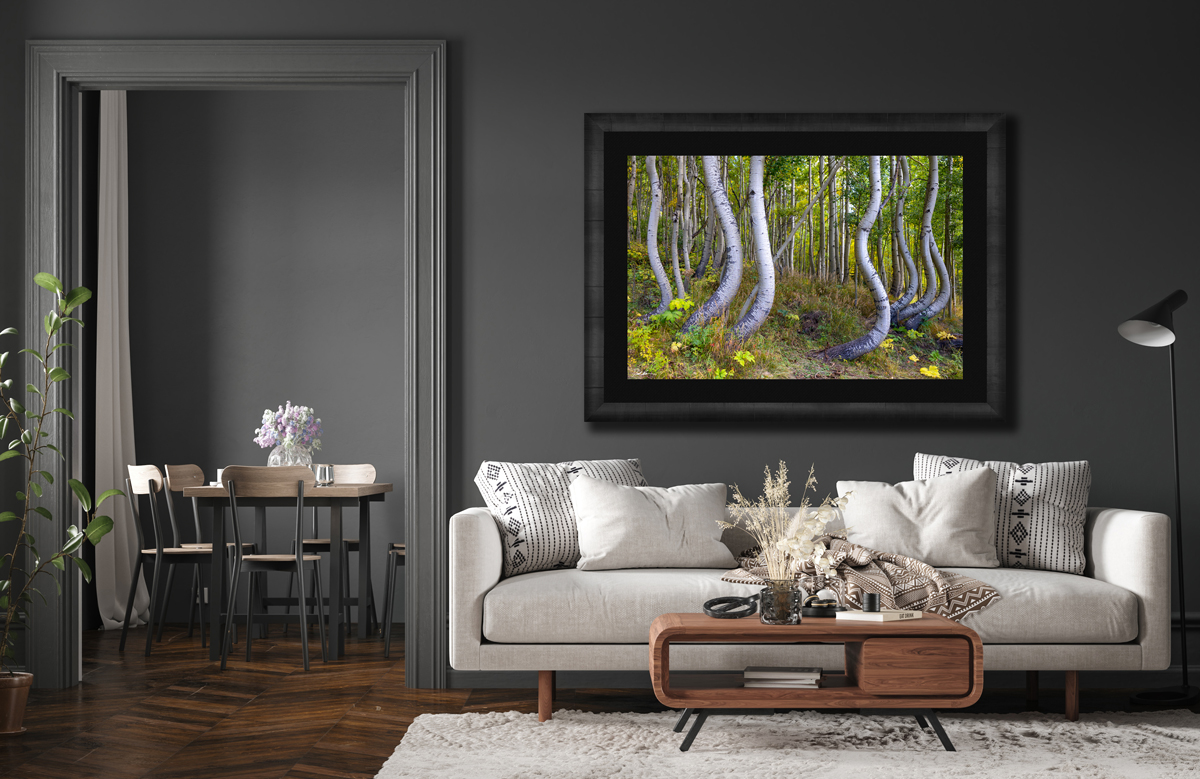
Tree landscape photography is one of my favorite subjects. Using trees as the main subject presents a creative challenge. Each tree is unique, like a fingerprint, and the artist’s job is to make something beautiful out of a single tree or an entire forest. Let’s dive into why trees make for great fine art photography prints and work so well in interior design.
The Art Of Tree Photography
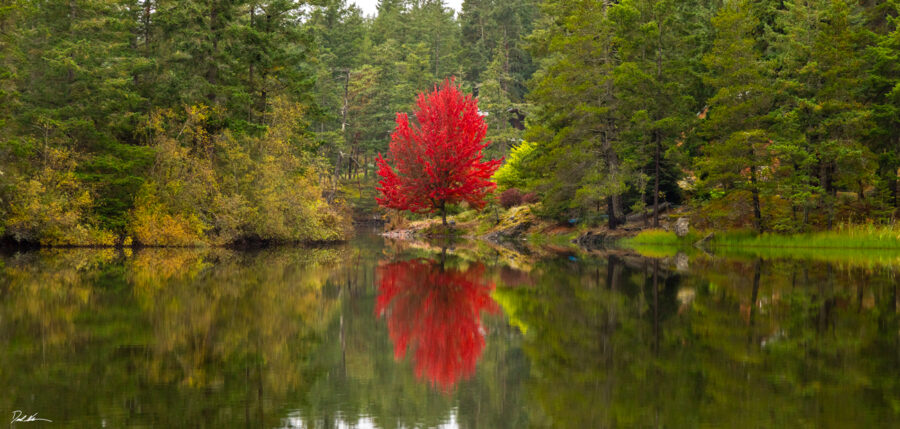
Dense forests full of fresh air are the perfect escape into nature. They are also a playground for photographic composition. So, what makes a great fine art photography print? Trees are a symbol of nature in its most pure form. Tree photos that make for popular fine art landscape photography prints fall into a few main categories.
- The Lone Tree – A single resilient tree standing alone in an open field
- Dense Forest – Thick, lush forest full of dense vegetation
- Abstract Tree Details – Zooming in on the details of a feature, such as bark, leaves, or roots.
- Tunnels – Capturing the natural tunnels trees make over roads or paths.
- Perspective – Photographing trees from below or above to give the viewer different perspectives of a familiar subject.
- Seasonal Colors – Using the changing seasons to show the beauty of trees in different seasons.
The Symbolism Of Trees
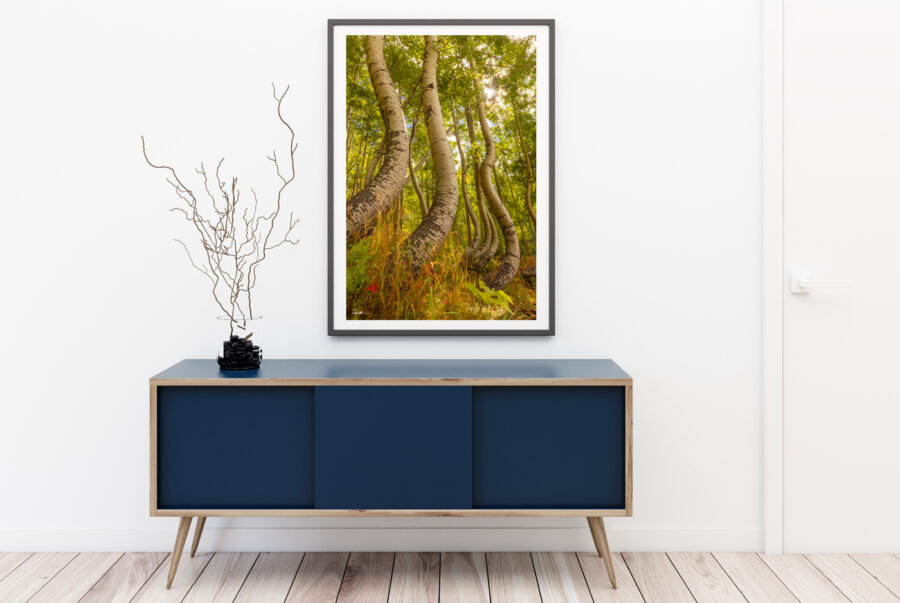
Trees have many symbolic meanings that work well with interior design. One crucial factor in choosing a design element for a home or office is that we want the subject to be inviting and welcoming. Our natural instincts do not see trees as a threat but as a sign of peace and tranquility in the natural world. Cultures, religions, and other groups revere trees for symbolism.
What trees symbolize
- Life and Growth – From the tiniest of seeds, a towering redwood can grow. This evolution mirrors our own. Trees provide essential oxygen to sustain life on Earth. They nourish our planet, and even in death, trees often provide nutrients to the forest for new trees to grow, completing the circle of life.
- Family – Think of the family tree. Often the trunk is considered the eldest long lived members of the family with each branch stemming from their origional relationship. On each branch daughters or sons of the origional parents with smaller branches or leaves making the offspring of these unions.
- Tranquility and Peace – Trees provide shelter from the elements like the sun and rain. They give us a feeling of safty that puts our minds at rest. The colors brown and green trigger feelings of warmth and connection to the earth.
- Strength – When we think of trees as a symbol of strength we often think about their roots being anchored deep in the soil. The thick trunks extending up toward the sky ready to take on any storm or natural disaster.
- Spiritual Connection – Trees represent the circle of life from birth, growth, maturity, and death. In ancient greece the Yew tree was associated with Hecate, the liberator of souls after death.
- Individuality – No two trees are exactly alike. Yes they can be part of a forest working together but each tree is unique. They have their own bumps and bruises, their own unique display of branchs, and their own number of leaves or needles.
Tree Landscape Photography For Interior Design
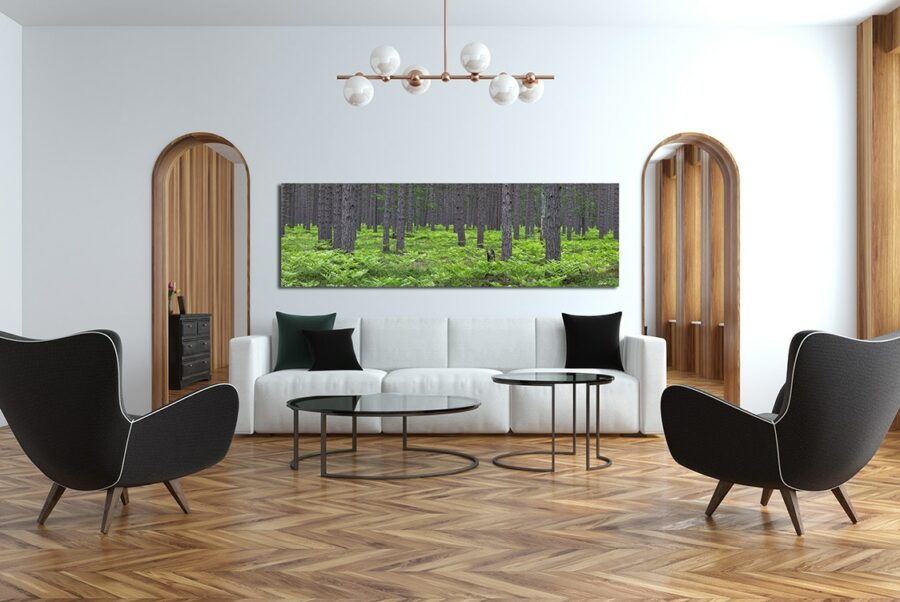
Subjects for interior design can be polarizing, making them risky for interior design subjects in public spaces. Trees, however, are the perfect way to bring elements of nature inside while creating a sophisticated look. High-quality images of the natural world make any home, office, or hotel setting inviting for all. Tree photography prints work well to create a soothing, relaxing environment.
How To Take Great Photos Of Trees
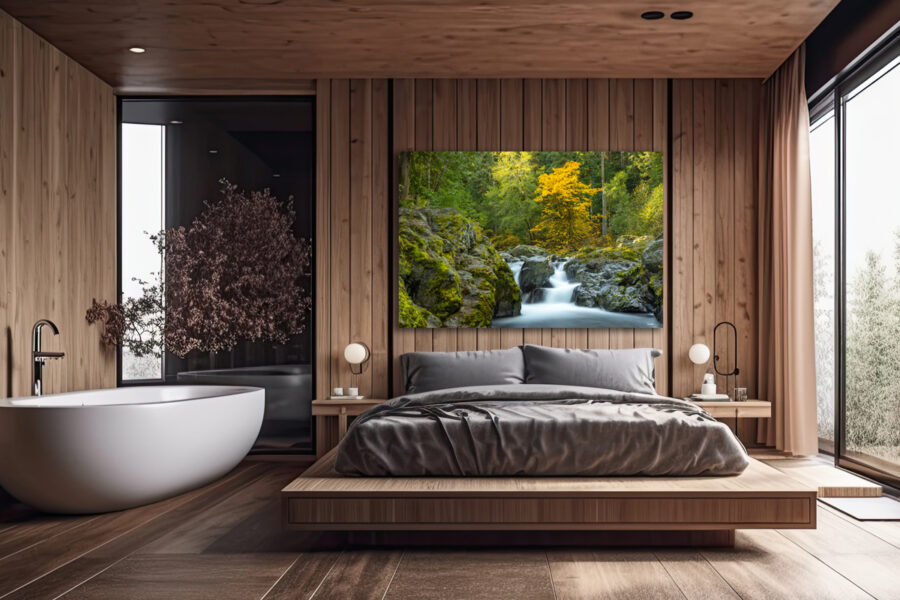
As a fine art landscape photographer, I love finding magnificent trees to put in my work. Forest photography is fun to practice. Immersing yourself in nature is so good for the soul. However, isolating lonely trees as the main subject is such a high contrast to the other style, but both work well for fine art photography prints. One pulls on a sense of community while the other the tension of independence with the potential for loneliness.
Tree photography is a mixture of fine art landscape photography and portrait photography. Trees are like humans. We are part of a community, but we are also individuals with our own quirks and personalities. Just like no two humans are alike, so too is the same true for trees. This makes it a good reason to approach tree photography as if you were photographing a wedding or a concert. Use a wide-angle lens to capture the big picture. Show the tree’s surroundings. Maybe animals or different plant species that share the same ecosystem as you tell a larger story. This is the ceremony or party at a wedding where you want to show where it was or how big the guest list was in one shot.
Then, it’s a good idea to switch to telephoto lenses and focus on the detail. Find unique compositions where you capture only a portion of the tree or a grouping of trees, leaving room for the imagination to wander. Picture this as a close-up of the bride crying or a ring exchange where we only see the hands in the frame. As you see in this article, both options make for really beautiful photography prints.
Camera Settings For Tree Photography
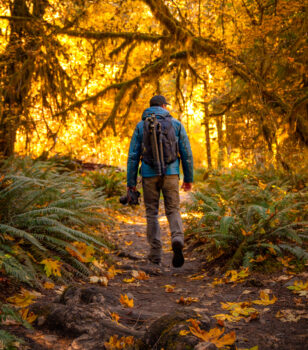
Picking the “perfect” camera setting for tree landscape photography is challenging because of the variety of subjects. The first thing you need to consider is what kind of image you are trying to achieve. From there, we can move towards finding the best settings. When photographing a full forest, our depth of field will be our best and worst enemy. Too many distracting elements in your composition turn a peaceful scene into a chaotic one. Start with f/8 and move up or down from there.
We want to capture as many details as possible to give the viewer the feeling of being there. I prefer using a shutter speed of 1/1000 of a second to freeze any motion, making everything as sharp as possible. Also, a tripod should be brought to capture as much of the natural light filtered by the forest canopy as possible. Focus stacking is a perfect choice for those looking to create a hyper-real feel of sharpness from foreground to background.
Use a polarizing filter to cut down on the reflections on the leaves.
Best Lenses For Tree Landscape Photography
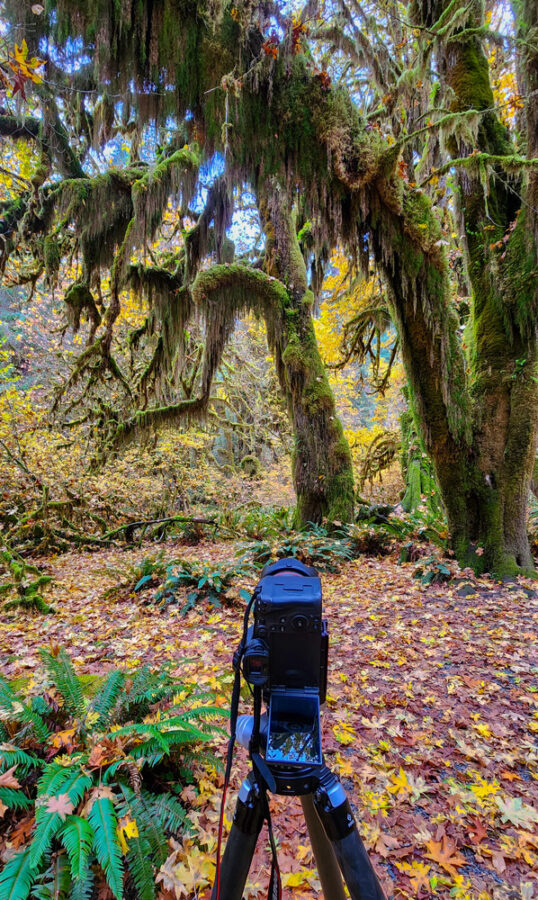
The end look and artistic message a photographer is trying to achieve will dictate what lens to use, but these three options will cover 99% of the shots anyone is looking to take.
- Wide angle lens – When trying to capture the scale of a tree, an environmental portrait, or a different perspective, wide angle lenses are the best place to start. They bring us into the scene as if we were there.
- Telephoto lens – If we are looking to capture the details of a particular tree or a unique feature, telephoto lenses give us the artistic flexibility to zoom in closer to the harder-to-reach places. It can isolate a lone colorful leaf or compress a grove against a background from a long distance.
- Macro lens – For those looking to take the deals of a tree to the extreme, a macro lens highlights a world most of us never see. From the cellular veins of a leaf to the cracks and crevasses of a tree bark, macro lenses wildly change our perspective.
Lone Trees And Solo Trees Popularity In Art
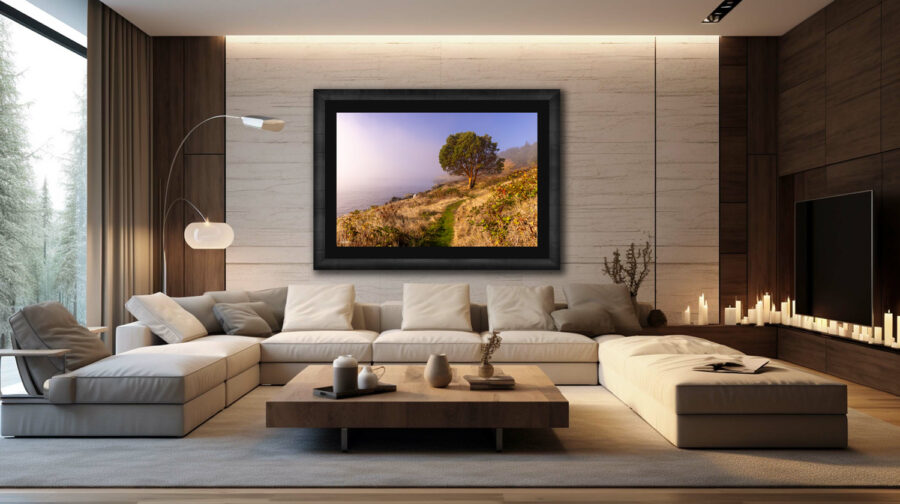
An individual tree standing alone in a field is a subject that plays over and over again in landscape photography. They give us a sense of resilience and perseverance. This popular subject shows up in farm fields across the world and the grasslands of Africa. Play with the landscape composition, placing the tree in various parts of the frame. As a fine art landscape photographer, I have been fascinated by the solo tree for decades.
What Your Interior Design Says About You
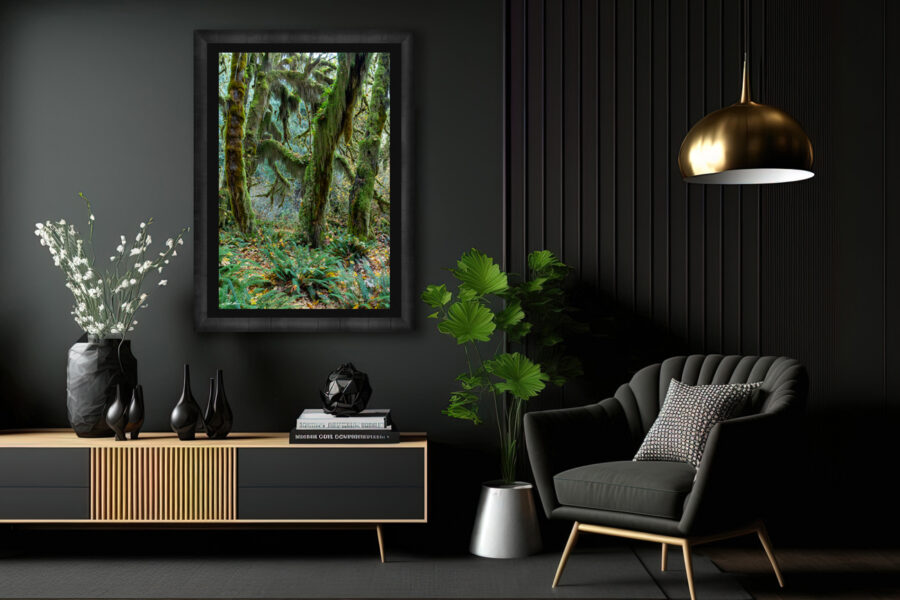
Your design says a lot about your personality and priorities. Decorating your empty walls with soothing nature scenes, such as dense forests or a grove of aspen trees, shows your sophisticated relationship with nature. It reveals something about your passions and love of exploring the great outdoors. Imagine walking into a home with black-and-white photos of vintage race cars or 1950s Hollywood actors. You can already deduce what this person might like to do for fun, their personality, or even what perfume or clothes they might wear. Having images of nature in your home fortifies your connection to the planet.
Find Wildlife Inside The Trees
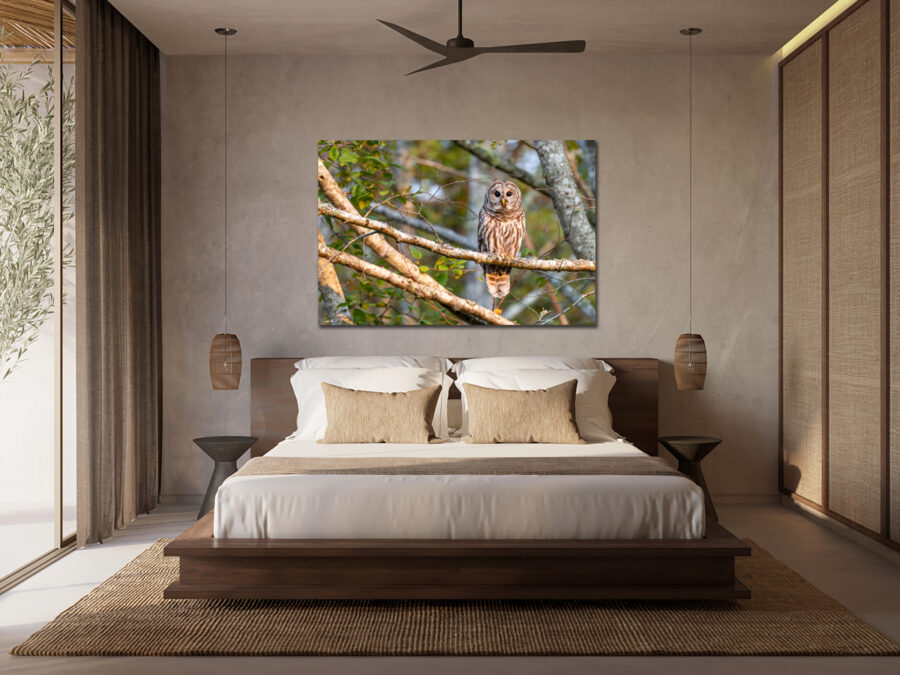
I am always on the lookout for wildlife inside of trees. This can be birds, bears, squirrels, or even fun mushrooms. Trees can be entire micro-ecosystems where life thrives. Take a few minutes to explore each branch or hole in the tree. Use a telephoto lens to get a closer look at the activity high in the canopy. You will be surprised how many species you can find on one tree.
Forest Photography For Mental Health
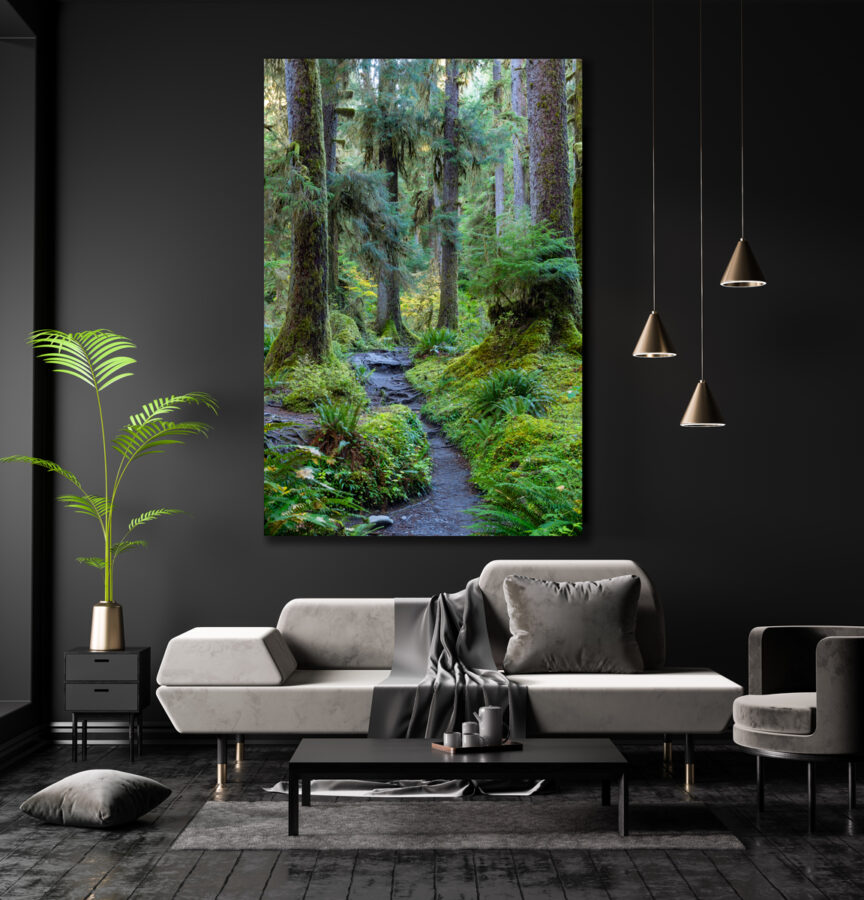
Humans are a part of nature, whether we want to believe it or not. We have an internal biological need to interact with other living things, such as plants or animals, which is called biophilia. Even viewing tree photographs and other natural spaces lowers our blood pressure and stimulates a positive chemical response inside our bodies. Science tells us one of the easiest ways to reduce our stress is to surround ourselves with nature, even if they are just photos. The importance of trees to keep us alive cannot be stressed enough, but how they make us feel should also not go unnoticed.
Pictures Of Trees In Different Seasons
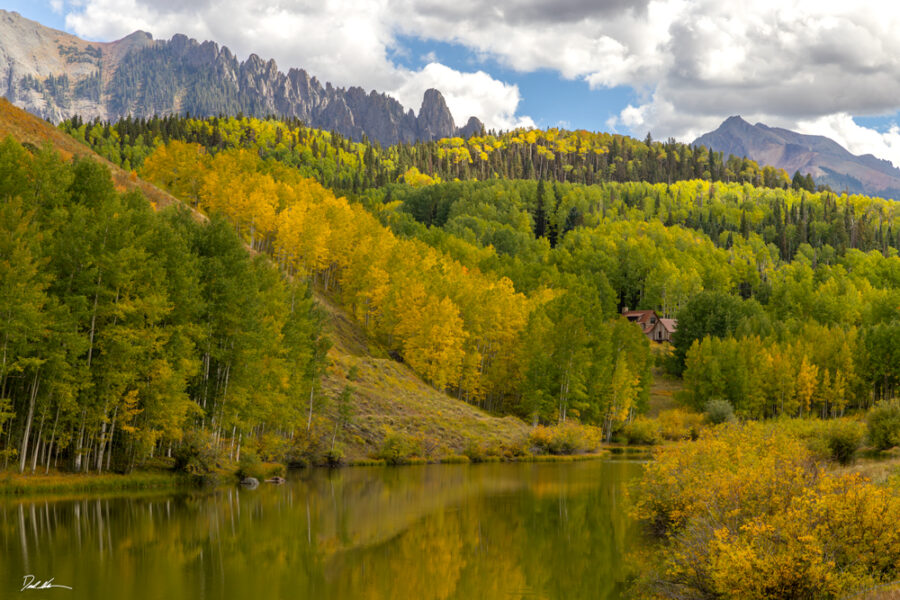
Trees are the perfect subject to return to during different seasons to capture their transformations. Each season presents a unique opportunity.
- Spring – Is the rebirth season for trees, a new beginning after a cold winter in many parts of the world. Flowering trees explode with color for a short period of time, making delicate, warm photographs.
- Summer—This is when trees are at their full density. A forest of trees glows a vibrant green in the early mornings, making for crisp, refreshing landscape photos.
- Fall – Explosions of color wrap the deciduous forest in shades of yellow, red, and orange. Mountain aspens erupt in a golden color, creating dreamy landscapes. Fall colors sell very well in the fine art world.
- Winter—Don’t put the camera away in winter. Pine trees after fresh snow create soft, quiet scenes. As a nature photographer, I find winter to be one of my favorite times of the year to play in the forest.
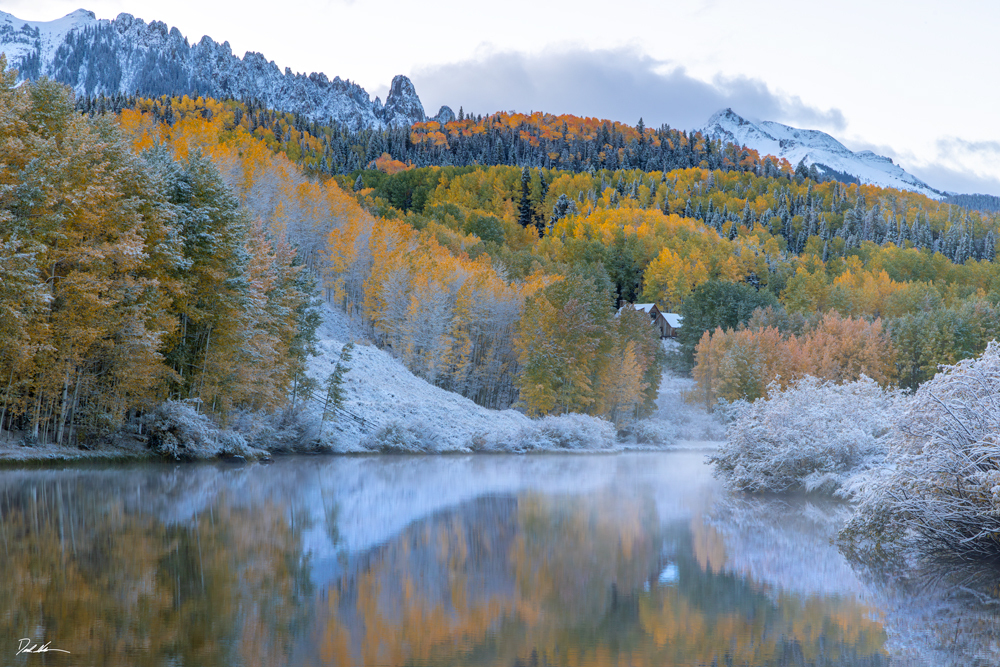
Seasonal Tree Photography Use In Your Design
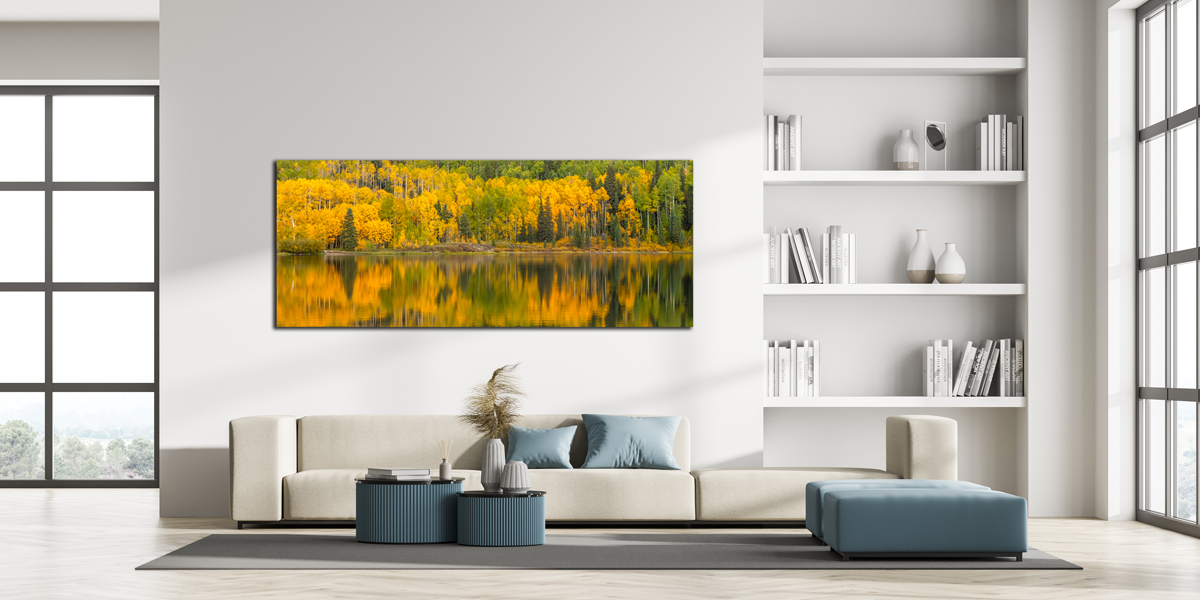
Each season evokes a set of feelings. Fall pulls at our instinctual desire to get cozy and find comfort food. Meanwhile, Spring makes us want to get back outside and surround ourselves with bright colors. Choosing what room to feature certain seasons in is an important factor.
- Spring – Spring brings fresh beginnings with new, clean, vibrant colors perfect for living rooms, bathrooms, and bedrooms. Each day, we essentially start in spring. We awake in our bedroom from hibernation (winter) to endless opportunity (spring). We enter the shower to emerge clean just as spring emerges from a dark, cold winter.
- Summer – Think bright, warm colors with sunshine. Trees during summer are full of life. Use them in rooms where the community gathers, like the kitchen, family room, or living room.
- Fall – The cozy, warm tones of fall colors pull at our intimate feelings of pulling up under a warm blanket by the fire. Use fall trees in rooms where comfort or intimacy is desired, such as a family room or bedroom.
- Winter – Winter brings crisp, stark beauty where monochromatic minimalism shines. A great way to use winter in your design is with seasonal decor during the holidays to pull in the holiday spirit. The minimal nature of winter trees also works well in modern Scandinavian style decore popularized by Ikea and Dania Furniture.
Black And White Tree Photography
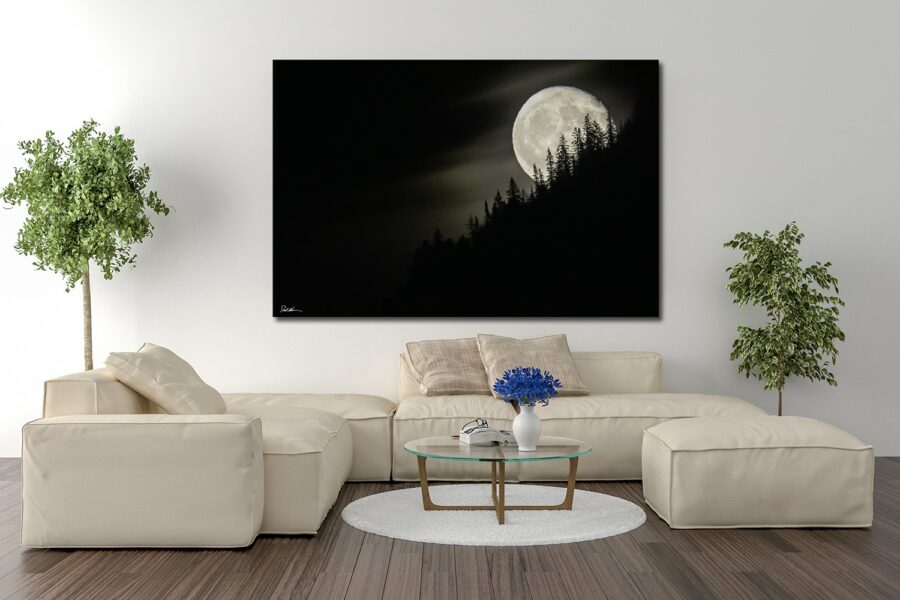
Trees lend themselves well to black-and-white photography. When color is eliminated from our view, details stand out more. All trees have wonderful detail in their bark and leaves. Texture becomes the main emphasis. Contrasting light dances through the forest all day from pockets of light making their way down to the forest floor from holes in the canopy. Black-and-white photography is timeless. If any species on earth seems to make time stand still while still living a full life, it’s a tree.
The Best Forest For Tree Landscape Photography
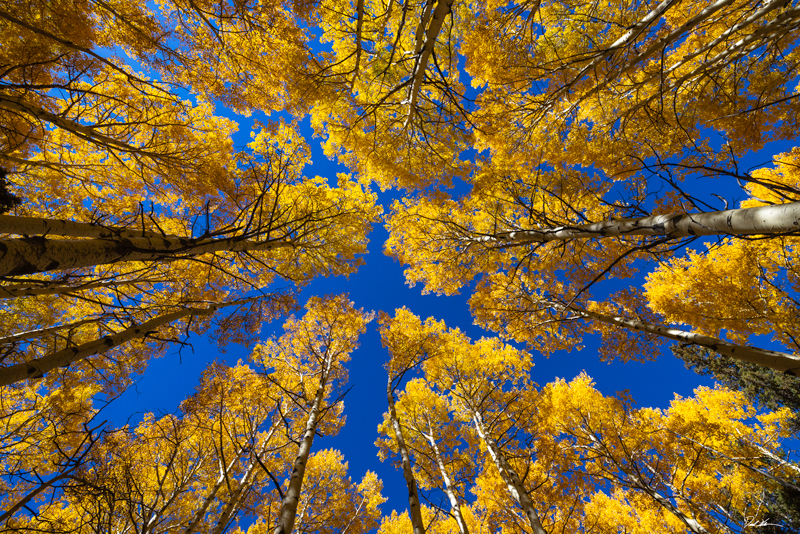
From a landscape photographer’s perspective, old-growth forests and Aspen forests are the best choices. Old-growth forests have so much character. They tend to have large trees with multi-layered canopies, creating wonderful depth in a photo. These forests also usually have a lot of wildlife and endangered species. Decaying ground matter and canopy openings give old-growth forests an added level of complexity without being cluttered with undergrowth. There is so much history in them, channel that while photographing them.
Aspen forests are a favorite amongst landscape photographers. The linear vertical lines of white bark allow for appealing prints. In addition, during fall, Aspens become a firework display of color. Very few species of trees put on a show like the aspens do. Also, many of them are found in mountainous regions, so their environmental canvas is usually as breathtaking as the tree itself.
Maple trees are a close second for me as a fine art photographer. Not because they are any less beautiful but because their environment is less dramatic than the Quaking Aspens. The best locations to see them are the Greater New England region, Michigan, and Wisconsin.
Our Love For Aspen Trees
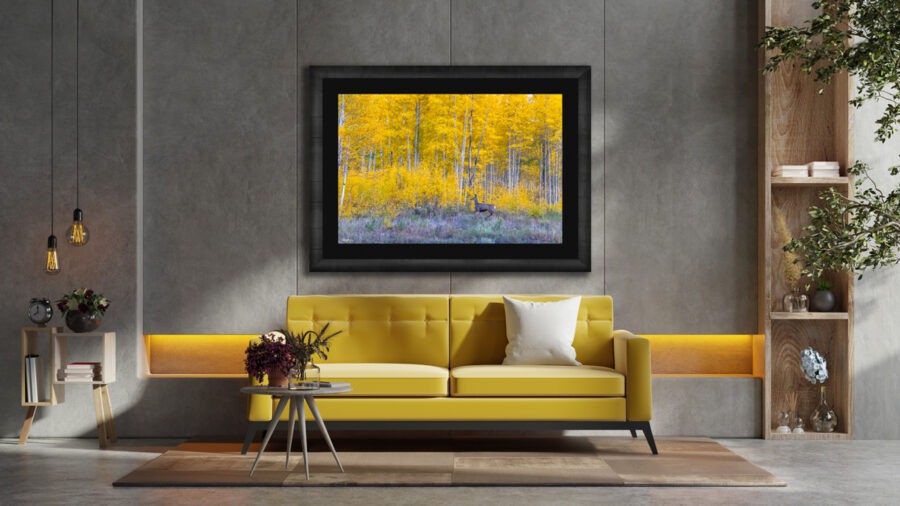
Because I listed them as the best tree to photograph, I’ll fortify my argument with its own section. Quaking Aspens, or simply aspens, are found throughout the American West. They grow in landscapes typically dominated by large groves of coniferous trees, making their beautiful fall colors stand out even more against the landscape. When they begin to shed their leaves, the forest floor echoes the golden colors of the canopy above, virtually overstimulating the senses. Aspen’s smooth white bark is a beautiful contrast to the green or colorful leaves.
Trees Deep Connections To Humans
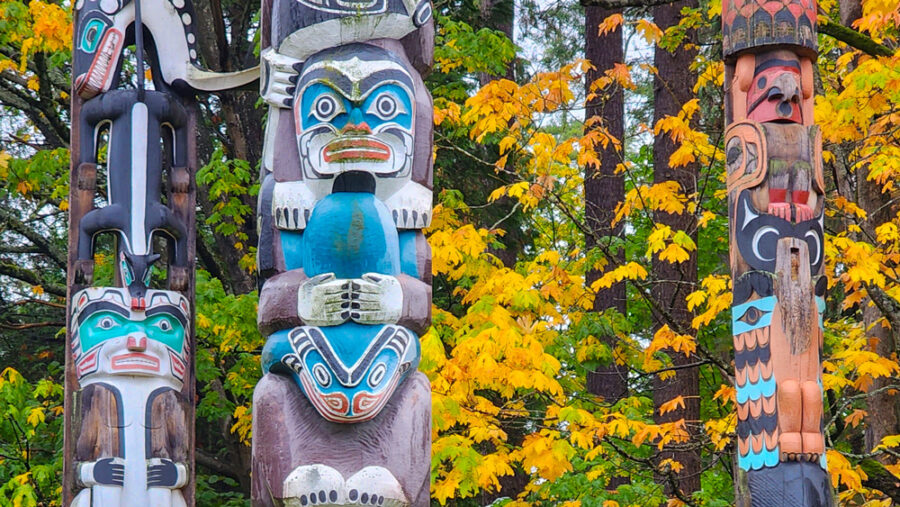
Think about this: We identify our family’s historical lineage on a “family tree.” The roots and trunk symbolize our foundation and central pillars, while the branches and leaves identify the individuals. We feed each other. Trees provide humans with oxygen, and we provide them with carbon dioxide. So many of our advances as a human species depend on trees for their materials. Paper for books advancing our education, religious beliefs, or letters to one another. Wood for instruments that stimulate our brains and bring us entertainment. We have needed trees since our existence, from building materials to spears for hunting. Trees have provided for humans spiritually, emotionally, environmentally, and scientifically, making them one of mankind’s greatest partners throughout history.
What Are The Tallest Trees In The World?
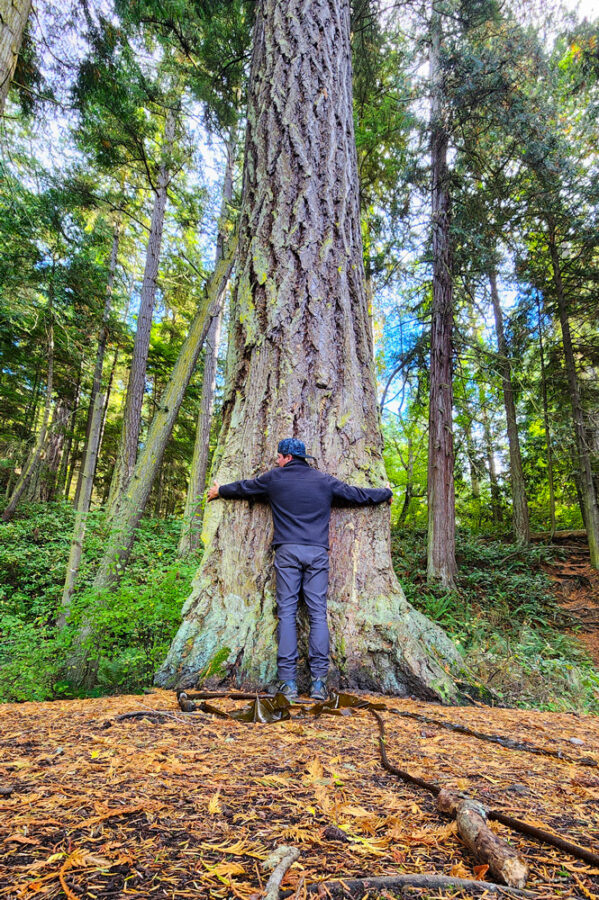
One can hardly wrap one’s head around the size and age of Coastal Redwoods. They can reach a mind-bending size of 370 feet tall and have lived for more than 700 years, with estimates of some living more than 2000 years. A near neighbor to the north lives the Douglas Fir, an American species reaching over 280 feet tall. However, taking the number two spot in the world is a tree called Menara. Located in Sabah, Malaysia, this Yellow Meranti stands 331 feet high.
Best Places To Practice Tree Photography

In my experience, the best places to practice tree photography are just going out into a forest and exploring, or if that is not an option, find a local tree farm. When I was living in the suburbs of Chicago, finding a forest was a bit of a challenge. I would drive to one of the local tree farms during fall and simply ask them if it would be alright if I spent a few hours wandering their rows of trees. They were always really kind. If you find any resistance, offer to give them some of your best shots as a payment. Usually, people see the benefit of getting beautiful images to help their business.
Photographing Tree Tunnels
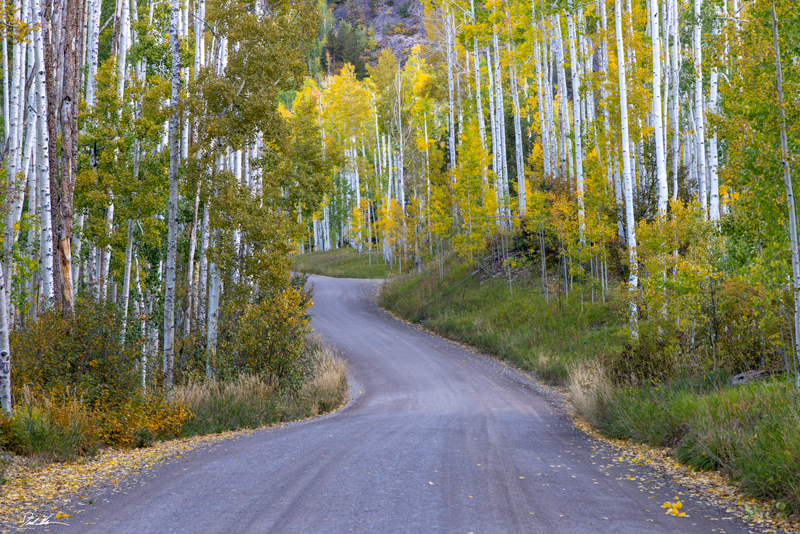
Tree tunnels are a wonderful way to show the beauty of trees. Roads through forest create gaps in the canopy where the forest eventually grows back over the road creating a tunnel like appearance. Take a car ride through older forest to see the effect in person. This subject always does well as a photography print. Another option is to visit some of the old plantations of the American South. Many of the entry ways have stunning tree tunnels leading up to the property.
The Curse Of The Japanese Maple
To me, Japanese Maple Trees are some of the most beautiful trees on earth. Because of that, they can be photographed to exhaustion. Check and see if your local arboretum has one. There is one Japanese Maple that draws thousands of visitors a year and countless photographers. The Portland Japanese Garden Maple. Made famous by photographer Peter Lik to the annoyance of a few local photographers, the Japanese Maple of Portland, Oregon, is now world famous. I highly recommend visiting the gardens. They are something to be seen. However, there is very little fine art left to be captured there. This poor tree has become a commercial cash cow, but I still love it. At least go there to practice tree landscape photography; you might be able to put a new spin on an old subject.
Explore Tree Photography For All Its Benefits
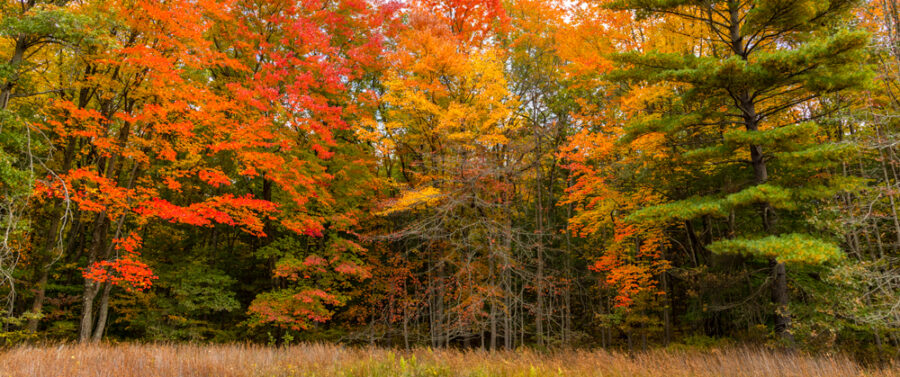
It is hard to deny how wonderful a day off exploring the woods makes us feel. Getting out into nature and using your camera to bring it to a wider audience helps people appreciate the beauty of this planet. My conservationist side knows just how important it is to create more ambassadors for this planet through art and storytelling. Take what you learned in this article, including the inspiration inside the photos themselves, and go create beautiful art to share with the world. I have never regretted a day spent in the woods. For more tips on nature and wildlife photography or articles about the business of luxury fine art photography, check out our News section for continued educational articles.
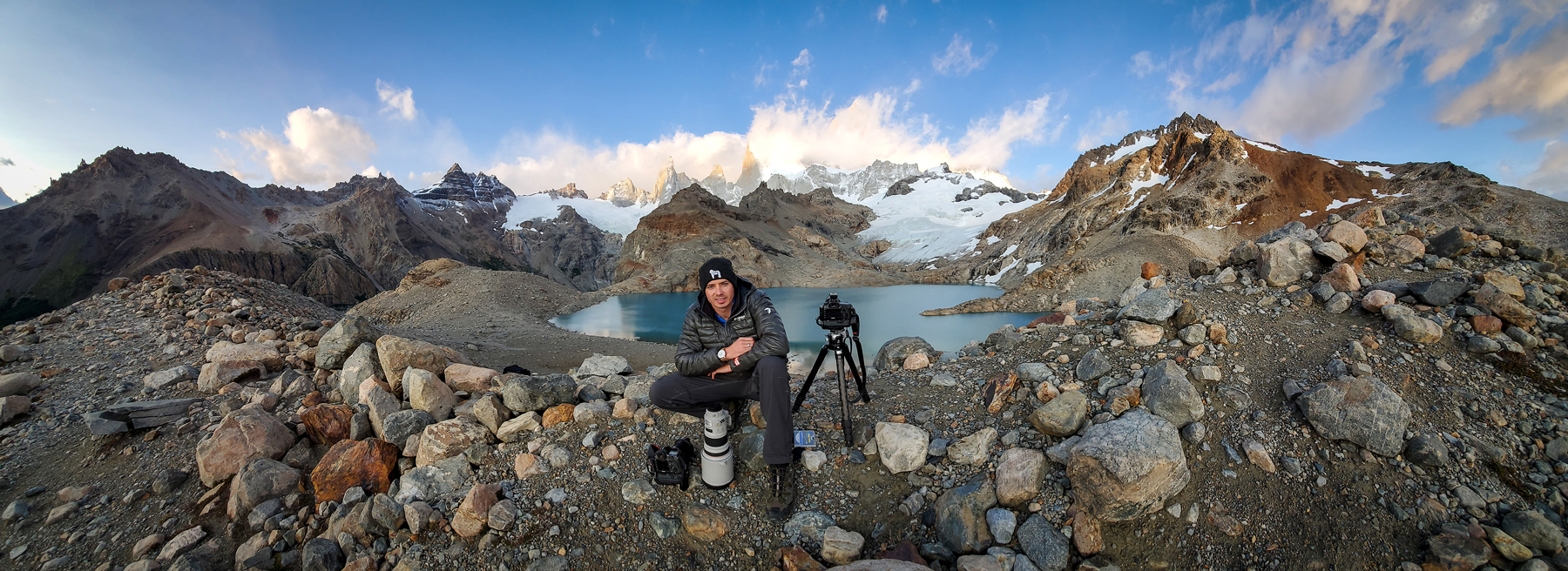
Hello! I'm Derek.
DEREK NIELSEN PHOTOGRAPHY RAISES AWARENESS ABOUT THE GLOBAL NEED FOR CONSERVATION THROUGH PHOTOGRAPHY AND DONATES UP TO 15% OF ALL SALES BACK TO ENVIRONMENTAL ORGANIZATIONS AROUND THE WORLD.
